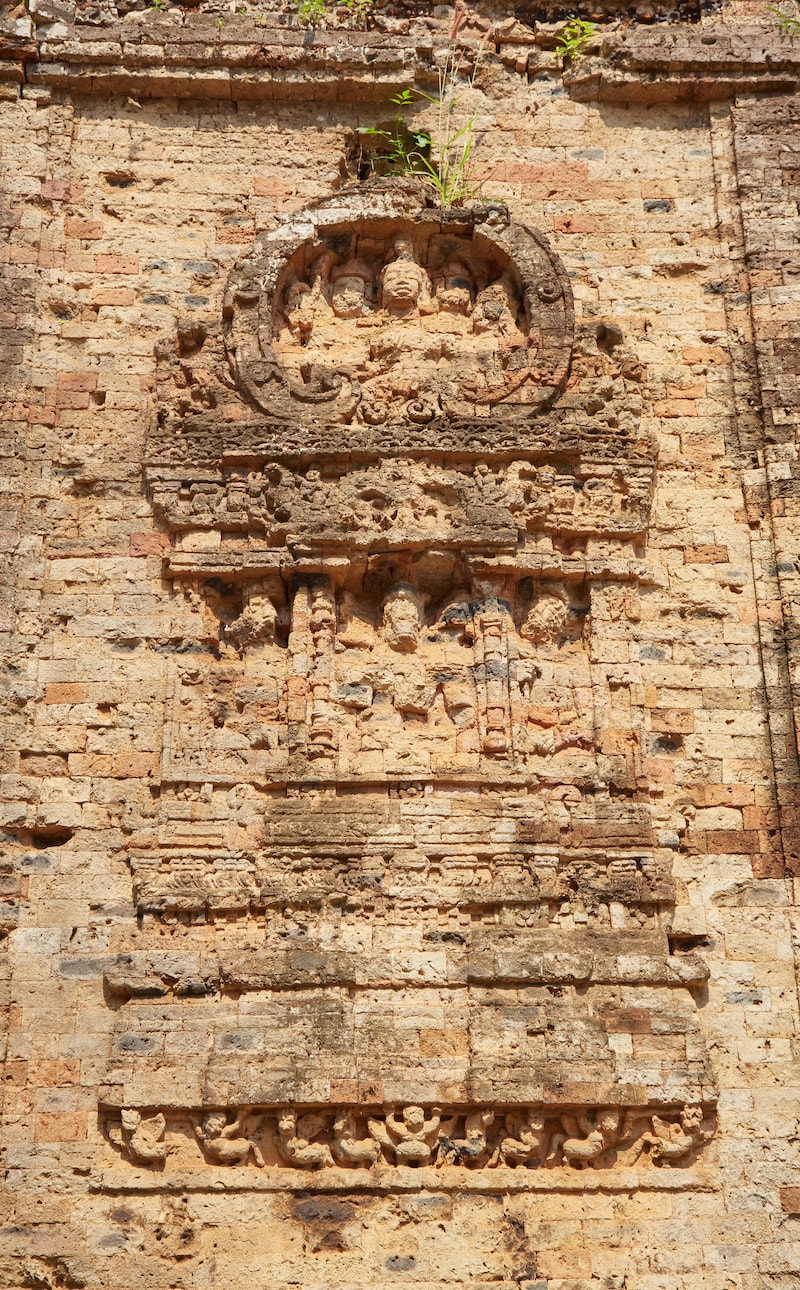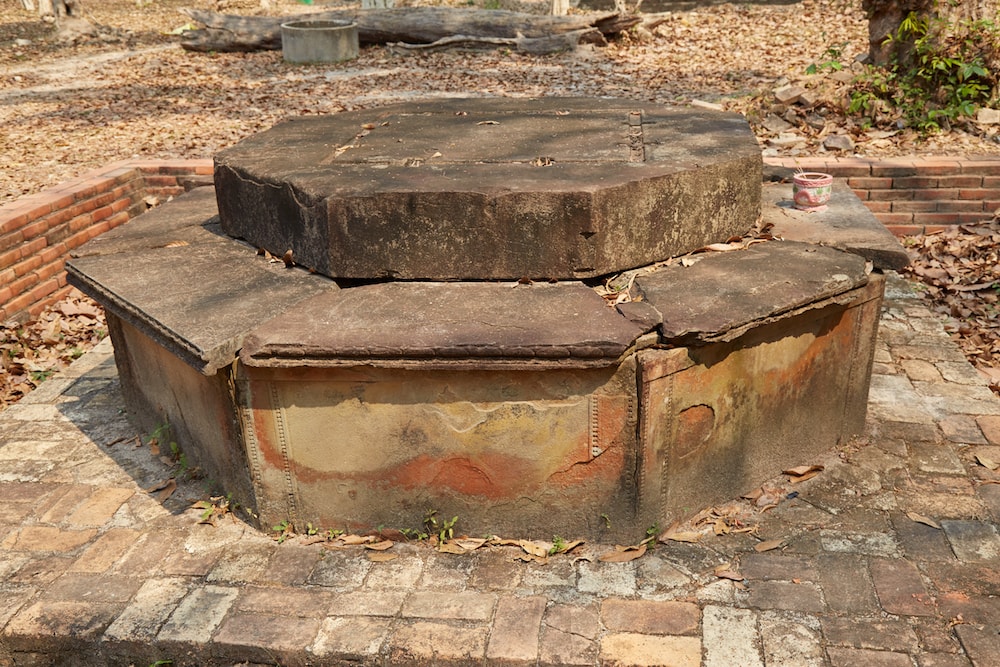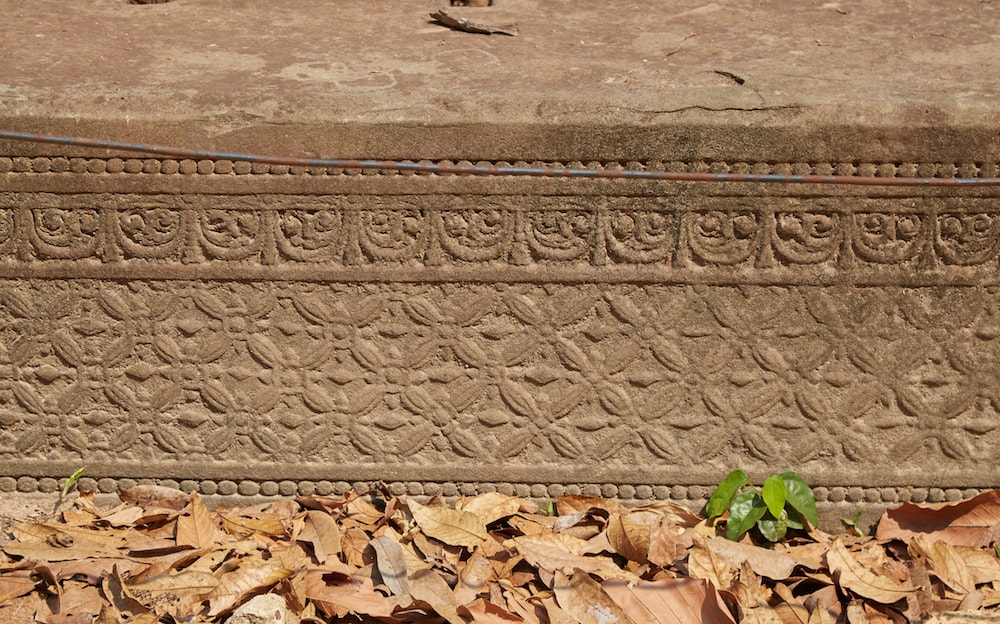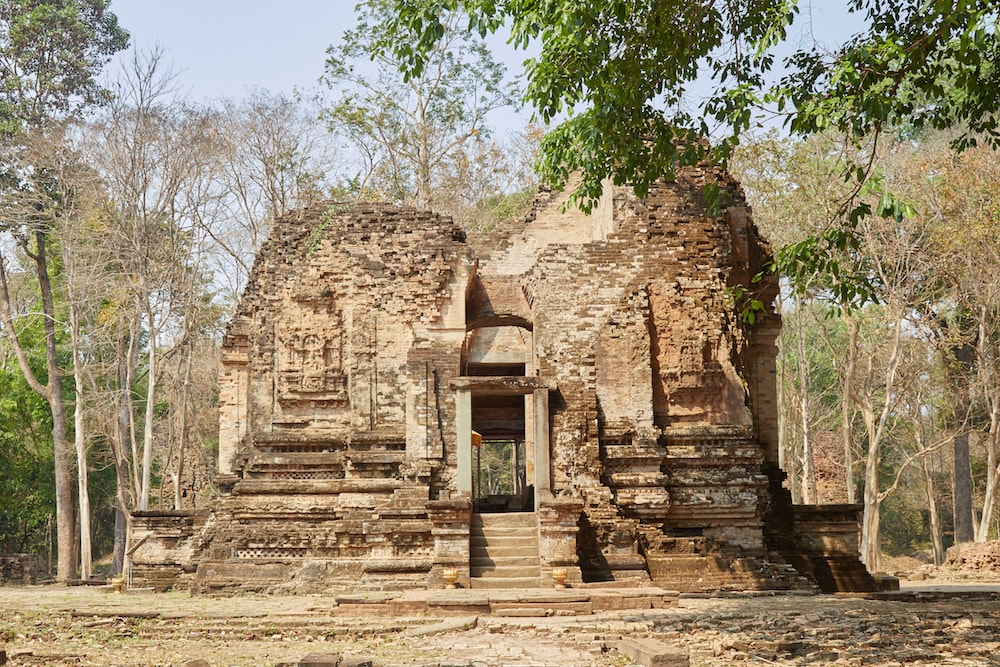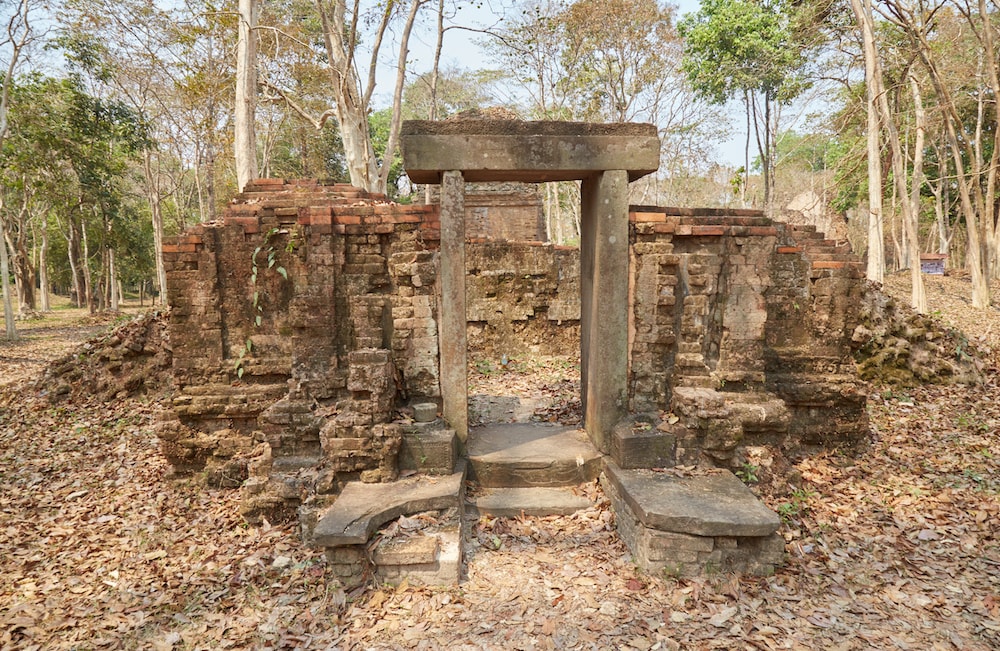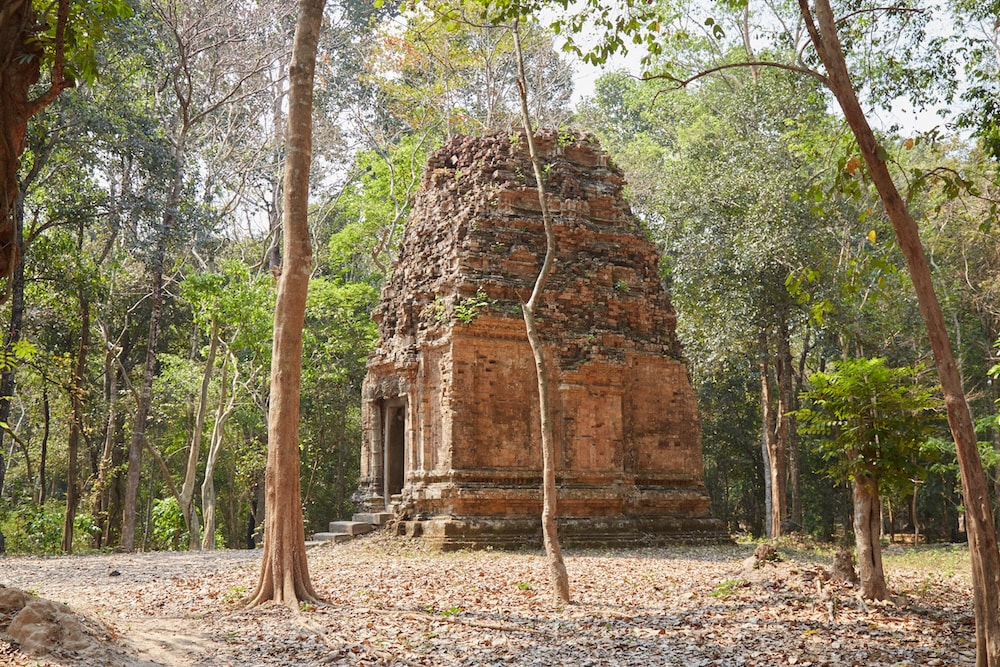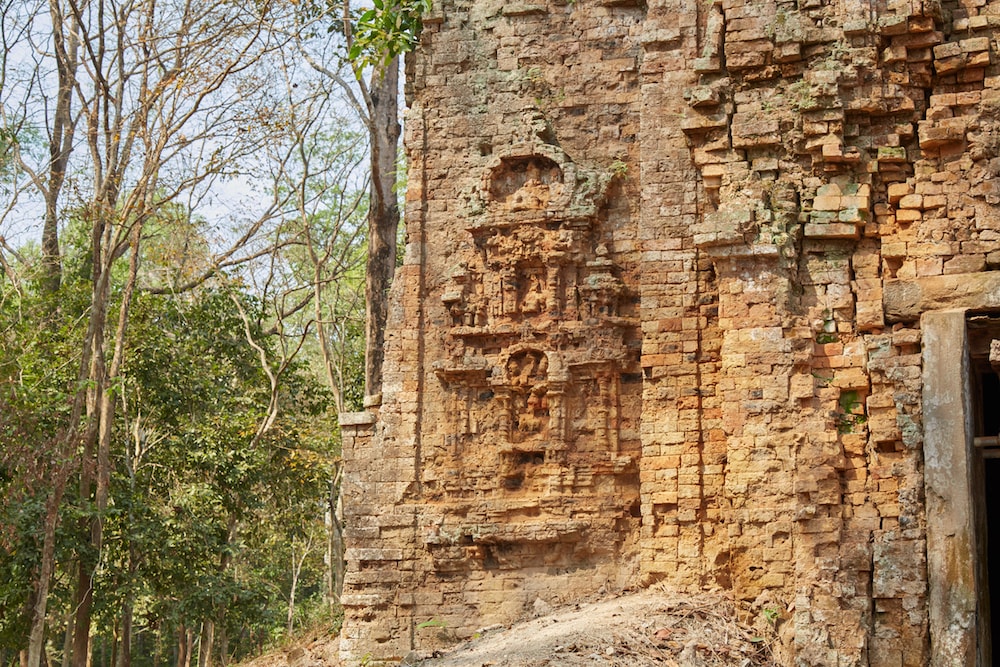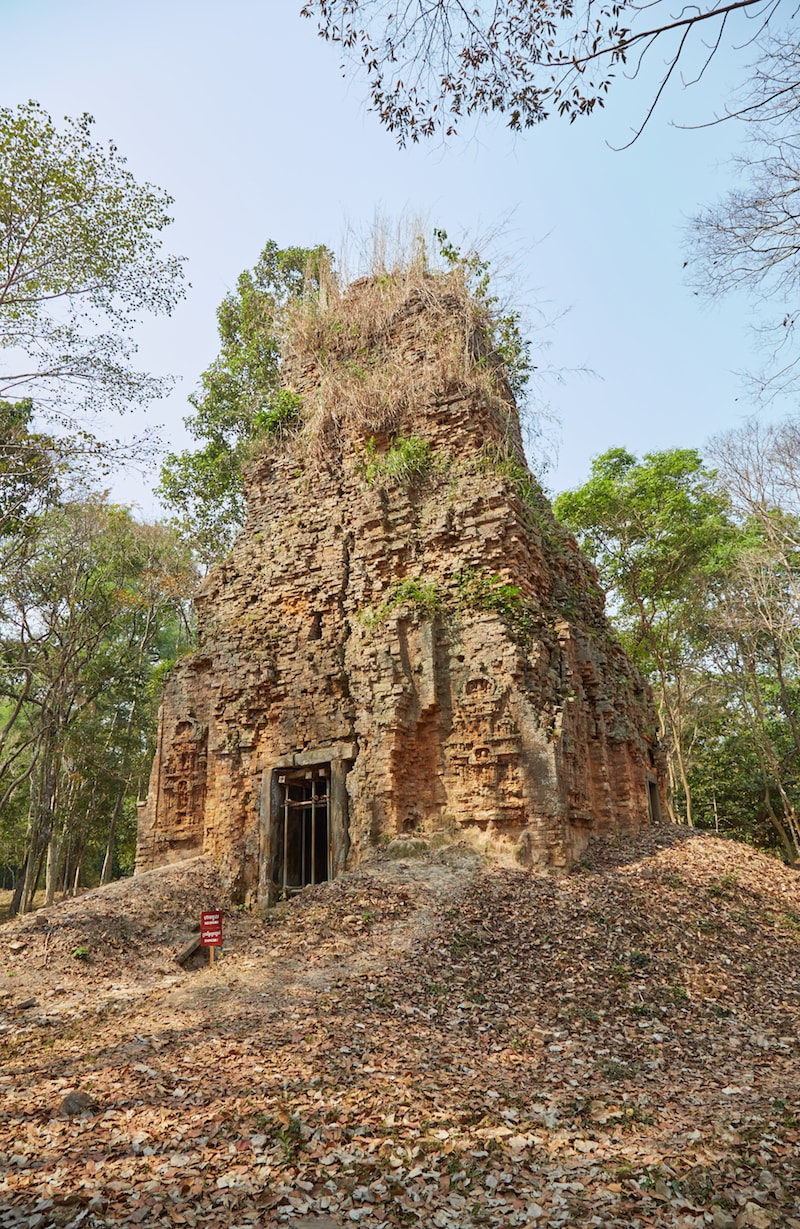Last Updated on: 7th November 2018, 09:19 pm
When visiting the very oldest temples of Angkor, it’s clear that their art and architecture were already very refined. Obviously, the civilization didn’t just spring up out of nowhere. But who was there before? While the exact details are murky, it’s generally believed that two Cambodian kingdoms preceded the birth of Angkor in the 9th century: Funan and Zhenla. And it’s the latter that brought us the surprisingly well-preserved ruins of Sambor Prei Kuk, which date as far back as the 6th century AD.
Sambor Prei Kuk consists of three different temple groups, and the whole area can be explored in a couple of hours. While lacking the wow factor of the main temples around Siem Reap, Sambor Prei Kuk is impressive when you consider just how old it really is. Furthermore, the general lack of tourists is another major plus. Coming here after Angkor is ideal, as you’ll get to observe which temple features got utilized throughout the Angkor period, and which remained unique to Zhenla.
What was Zhenla?
While the kingdom of Funan supposedly existed from the 3rd century AD, Zhenla emerged in the late 6th century and lasted until the early 9th. At least that’s modern-day historians’ best guess. Both names come from what the ancient Chinese dynasties kept in their annals hundreds of years ago.
At one point, the Chinese stopped using Funan and started calling the region Zhenla instead. Did Zhenla take over Funan? Or were these actually the same empire? Alternatively, some scholars doubt that Zhenla was a unified empire at all. It may have merely been a collection of city-states that shared a similar culture.
Whatever the case may be, we know that the founder of Sambor Prei Kuk was a king named Isanavarman I. And just like at Angkor, the people of Zhenla were mostly Hindus, and the preferred god of royalty and priests was Shiva. Around this time, the Champa Kingdom was thriving to the east in what’s now Vietnam, and they too followed a similar socioreligious structure.
North Group
Just nearby the ticket gate and the parking lot is the Northern group of temples, or ‘Group N.’ Along with the South group, these are considered among the oldest structures at Sambor Prei Kuk. They probably date back to the 7th century during the reign of Isanavarman I.
Oddly enough, the most interesting structures in the entire group are outside the limits of the ancient walled precinct. After paying for your entrance ticket, start by walking away from the main ruins area and parking lot. Across the road are three particularly interesting structures which seem to have been placed at random. They’re all distinct from one another, and are easily among the highlights of the entire park!
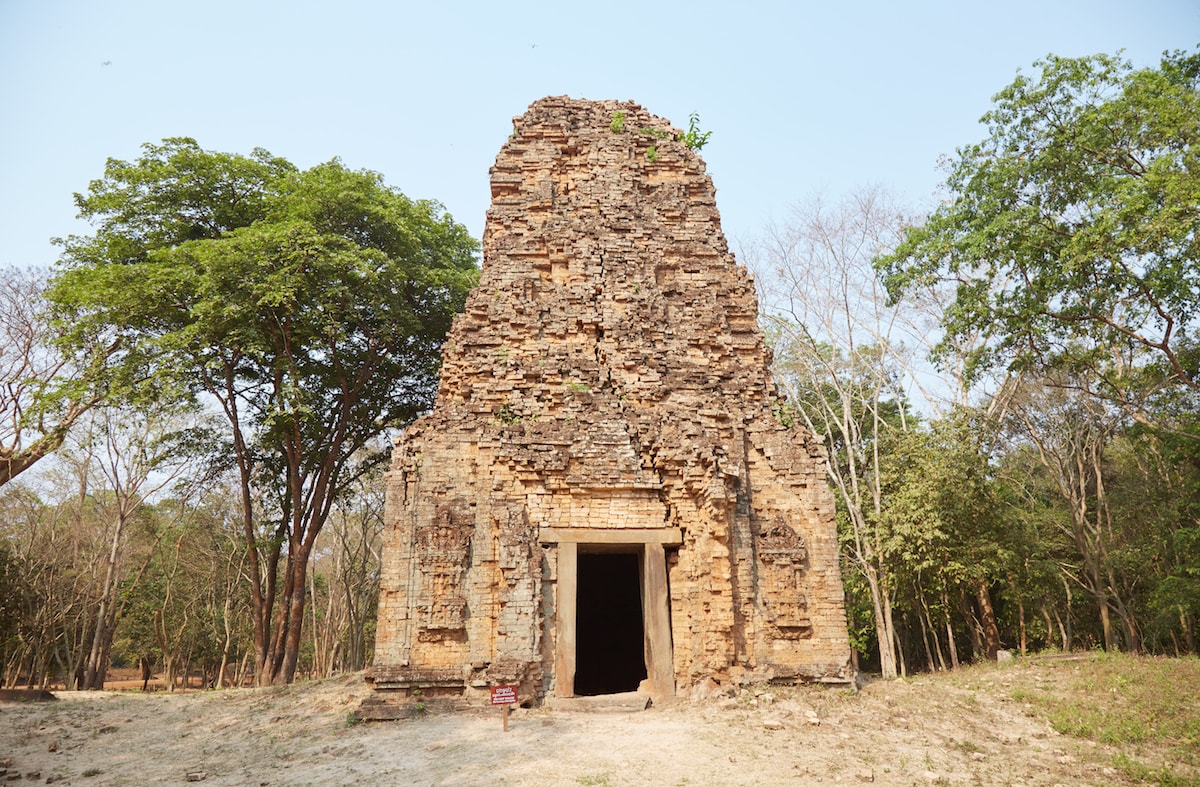
The easternmost structure is Prasat Daeum Chan, which will be your first encounter with a unique artistic motif that Sambor Prei Kuk has become known for. Carved into the side of the brick sanctuary are vimanas, or the ‘flying palaces’ of Hindu mythology.
Believe it or not, Hindu stories which date back thousands of years go into great detail about flying ships as well as flying palaces. The descriptions are often vivid and eerily reminiscent of 20th-century science fiction. These flying palaces are commonly depicted throughout Sambor Prei Kuk. For some reason, though, they didn’t catch on long-term and were not replicated during the Angkor period.

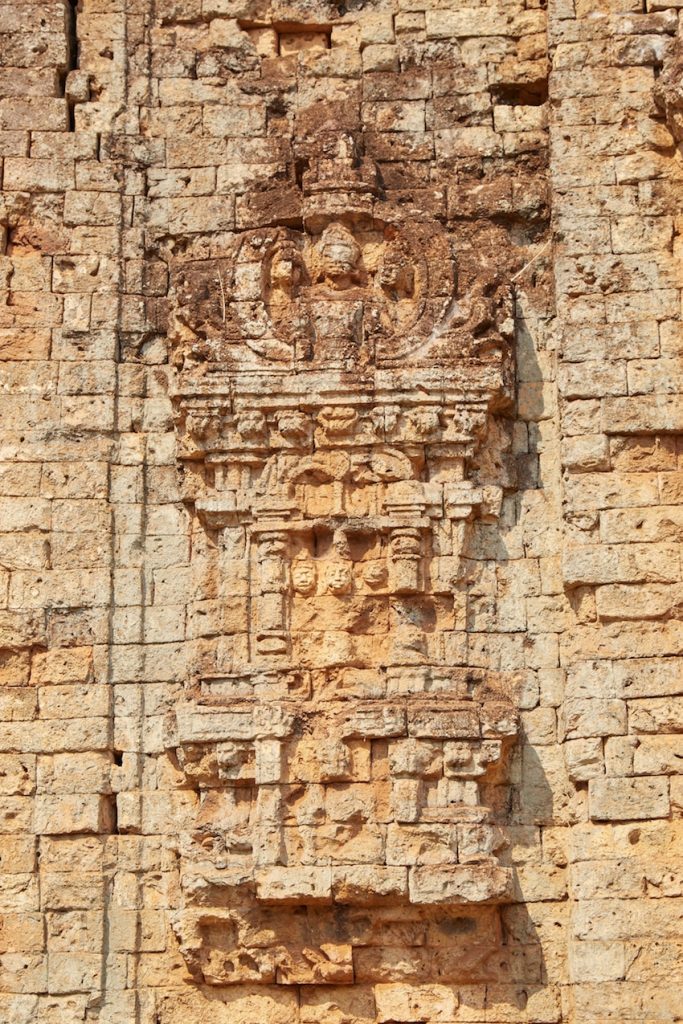
In the center is an unusual structure that looks more like a modern reconstruction, but it isn’t. For some reason, in contrast to all the other brick sanctuaries at Sambor Prei Kuk, this one was made of large and smooth slabs of stone. A more recent statue of a hermit occupies the interior, while bullet holes left in the 1970’s can still be clearly made out in the back.
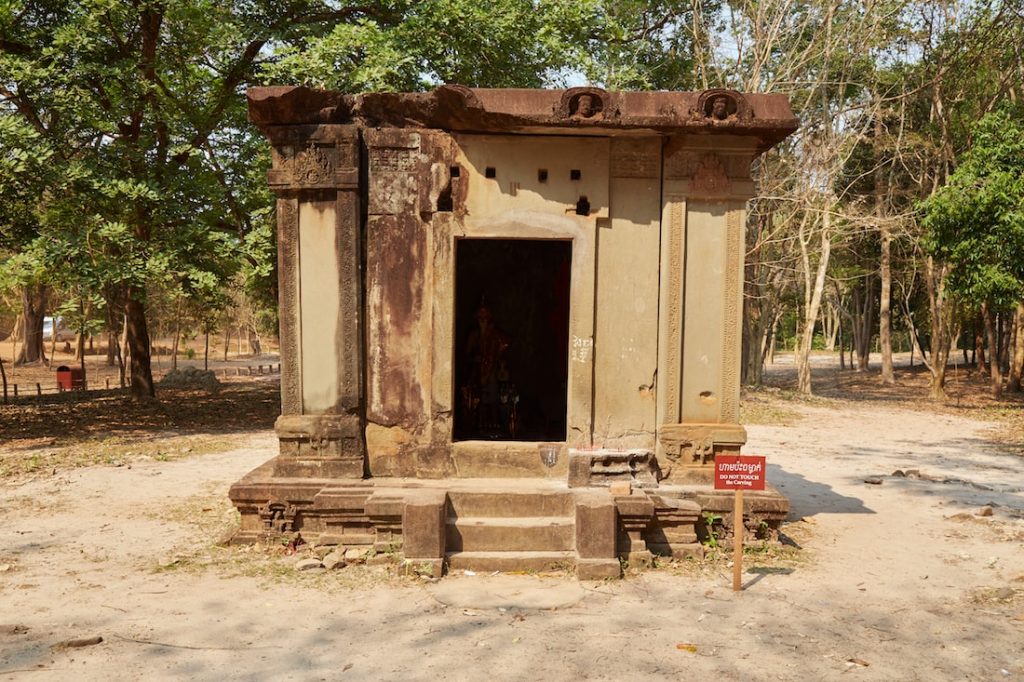
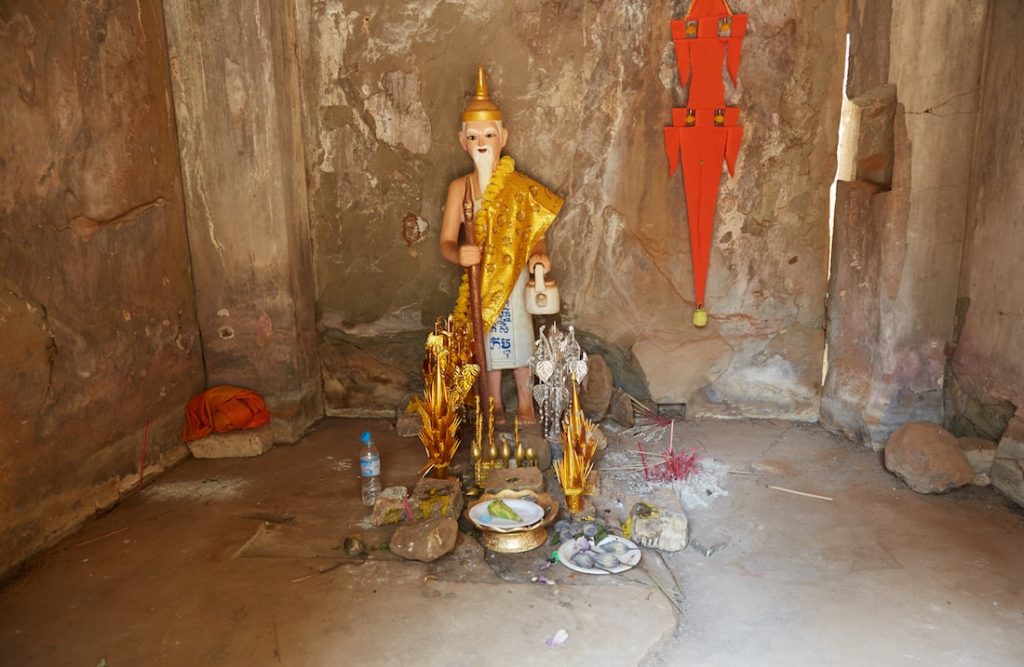

The westernmost structure of the three has been completely taken over by a tree. From a distance, the whole things looks like a tree itself. It’s a sight which even rivals the tree-gripped stones of Ta Prohm.

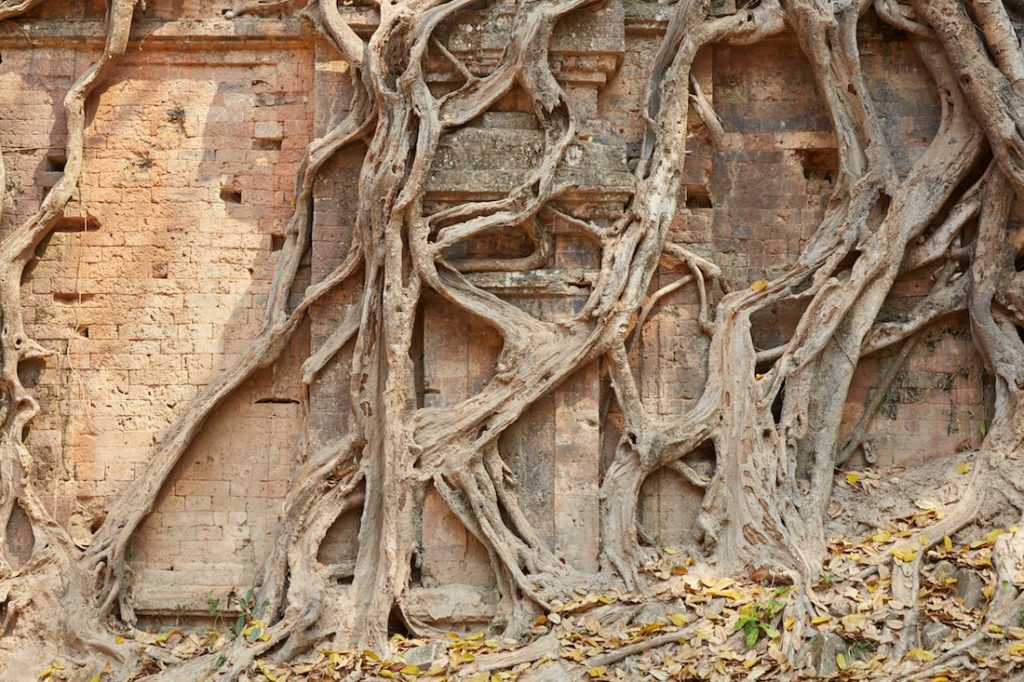

Heading back across the road and further south, you’ll eventually reach what was once this area’s original ‘city.’ Within an ancient wall stood a central sanctuary surrounded by four others in a quincunx pattern. There are also a group of three structures aligned in a row to the west of the central ones.
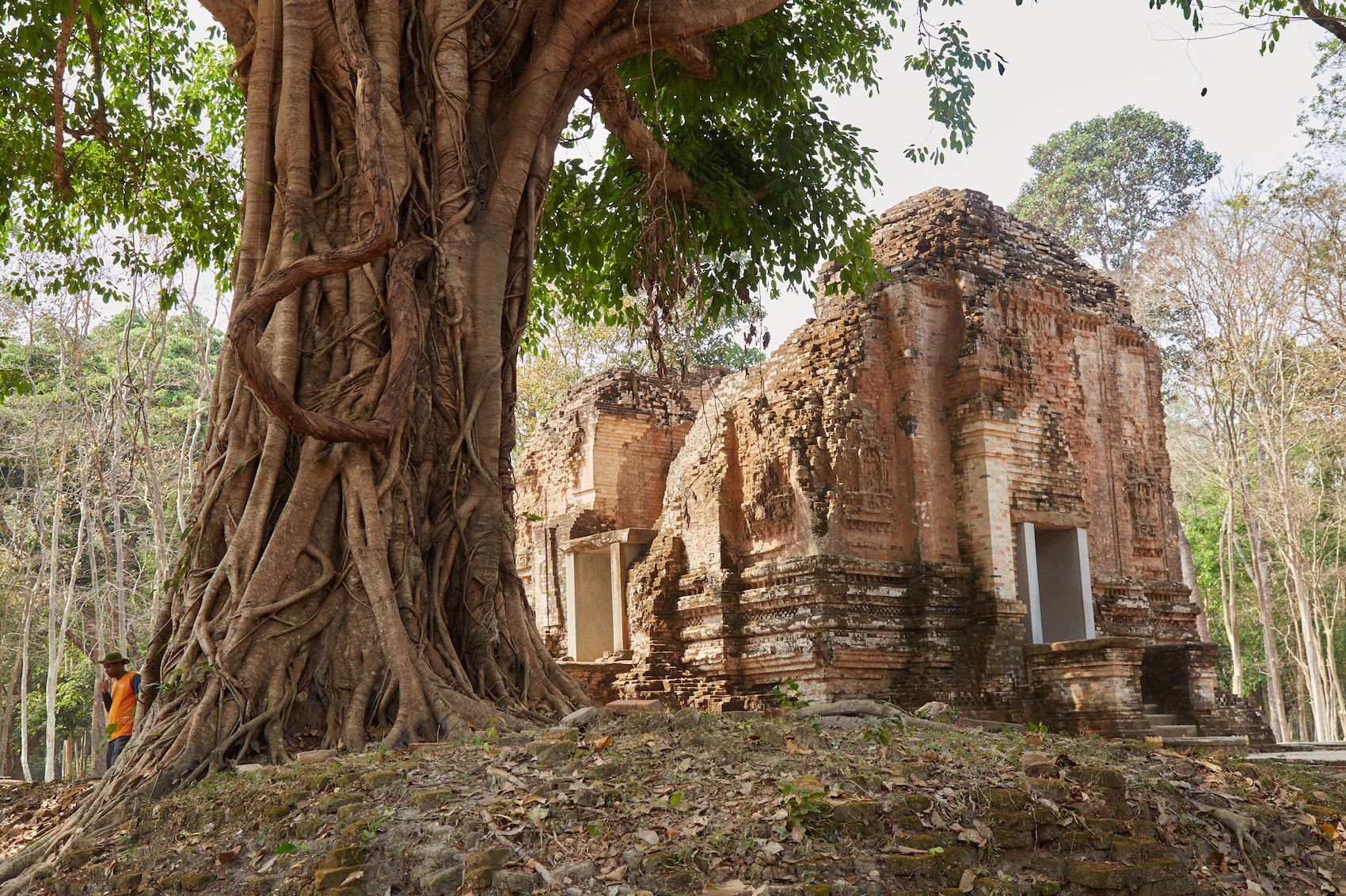
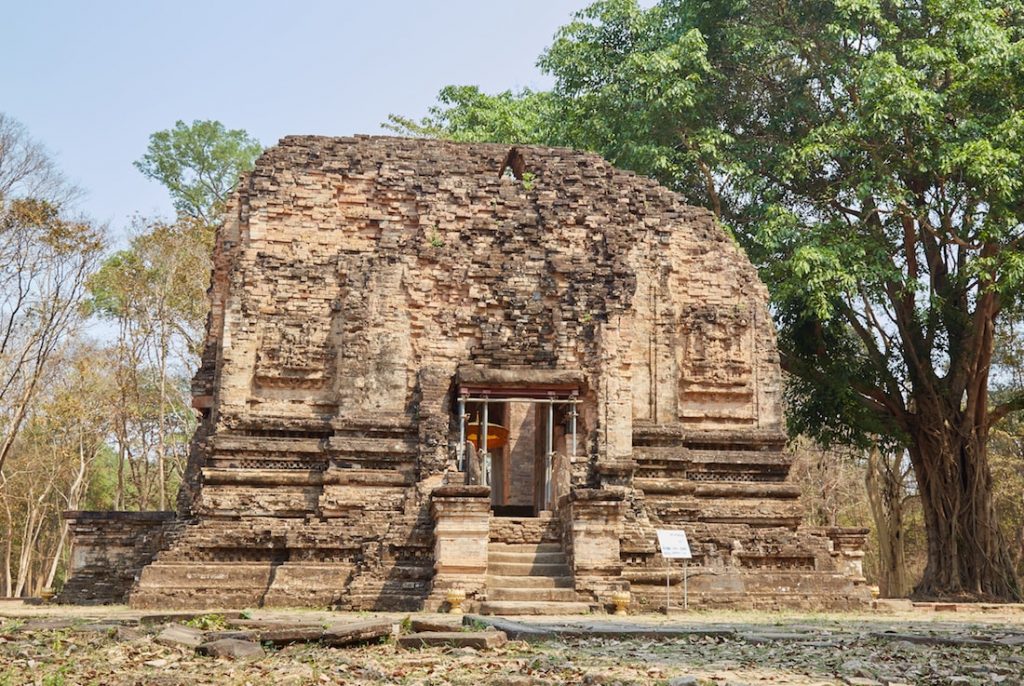
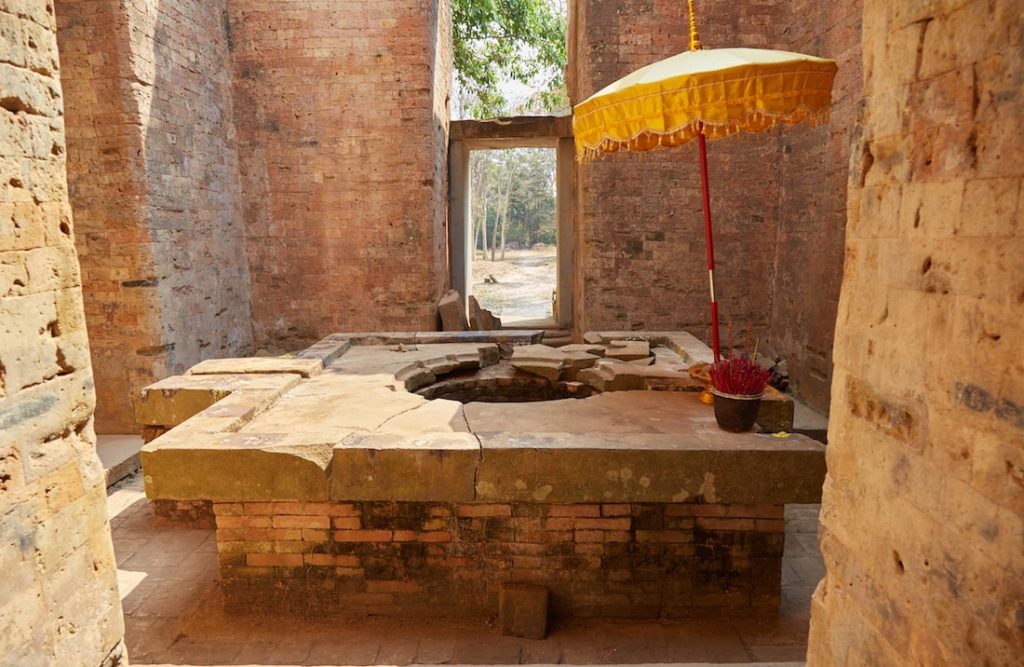
The central and main sanctuary of the group was dedicated to Shiva. Inside the large four-sided structure is a yoni that probably once contained a shiva linga, now missing. Judging from the other sanctuaries, it’s possible that a statue may have stood here instead.
Perhaps more interesting than the central sanctuary itself is the one that’s in the shape of an octagon! This is another peculiarity of the Sambor Prei Kuk ruins that wasn’t utilized by the later architects of Angkor. While there’s one in this group, the southern group contains plenty more octagonal structures.

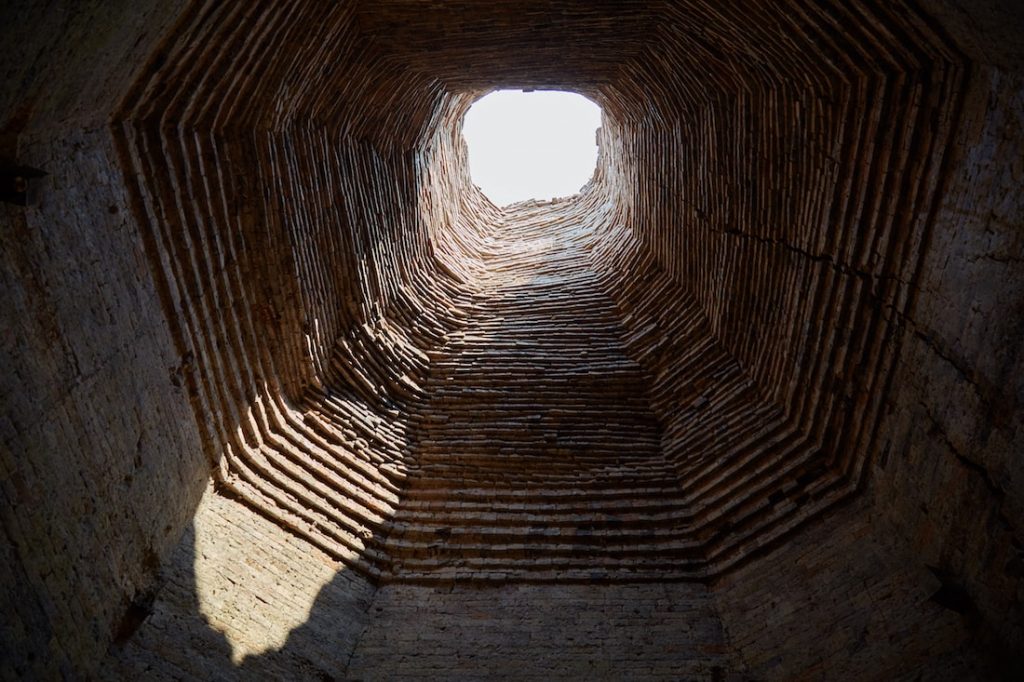

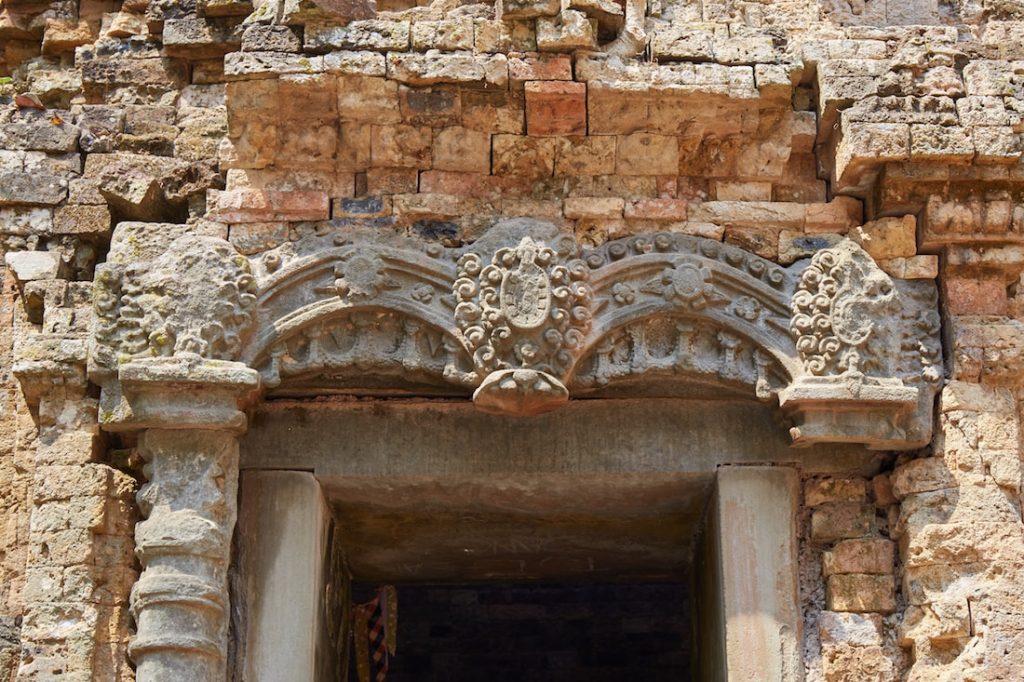
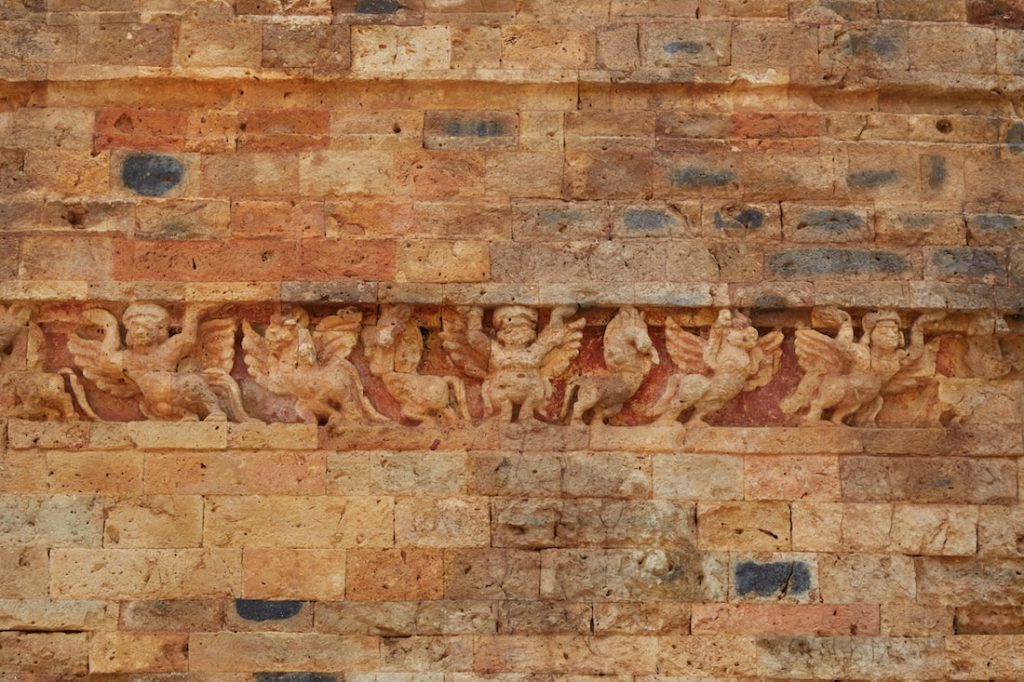
The lintel carvings at Sambor Prei Kuk are also unlike any of those at Angkor. Instead of carvings of gods, kalas or animals, the early Zhenla artists often just carved floral designs and geometric shapes above the temple doors. As mentioned above, the celestial beings were often depicted on the walls instead. Also notice the various winged beings that look like angels.
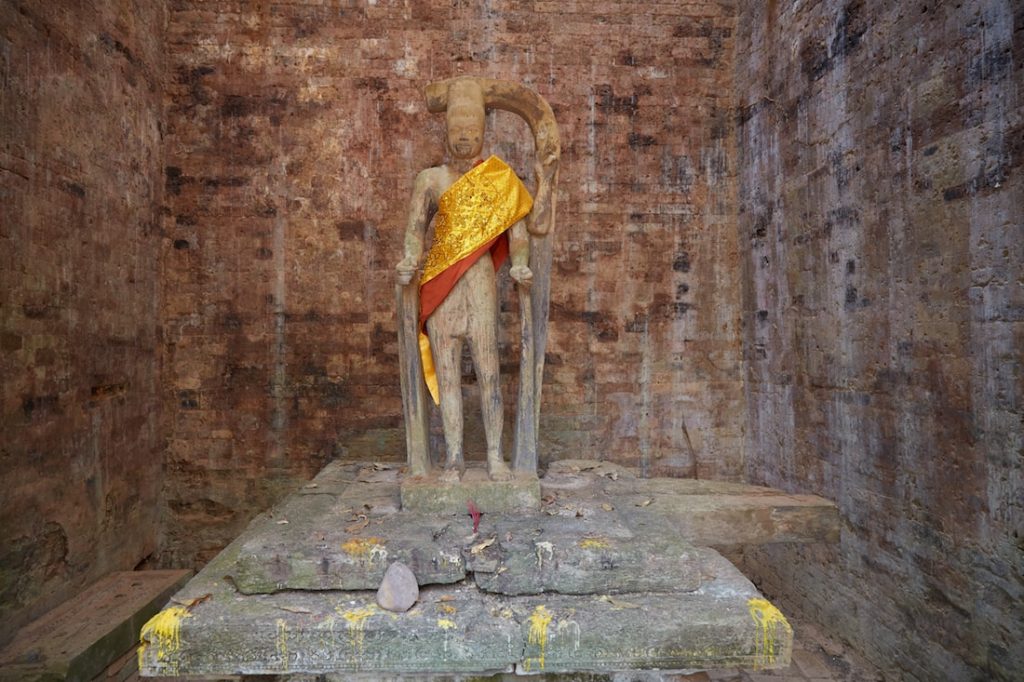
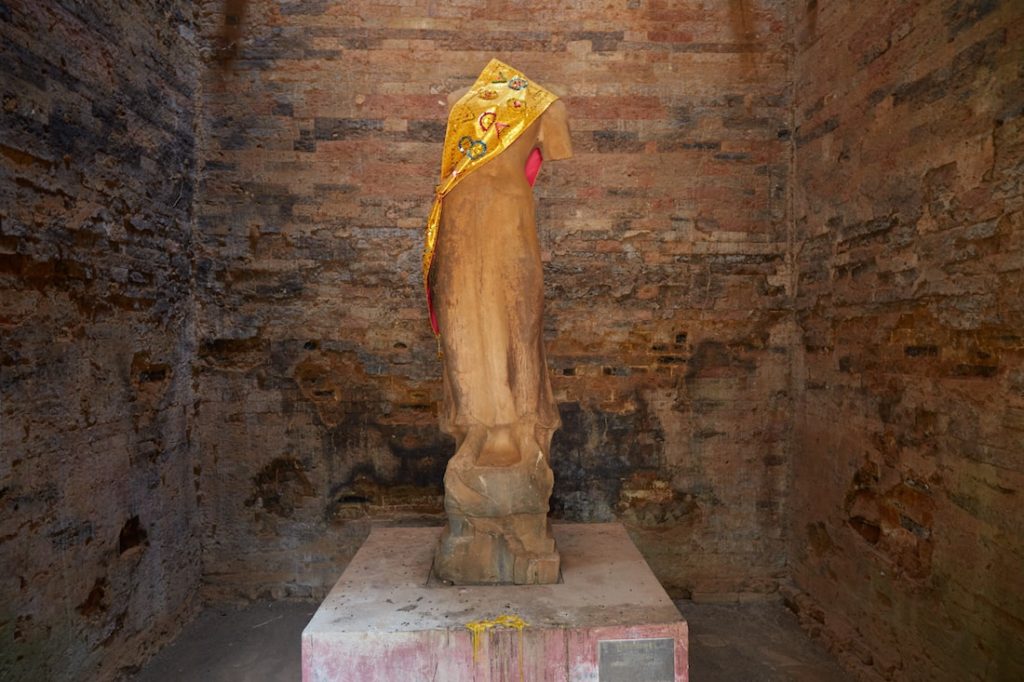
Just as in the later Angkor period, the sanctuaries of Sambor Prei Kuk contained statues of Hindu deities. There was clearly no room inside for a congregation, but just barely enough space for a few priests to carry out rituals.
While the originals are kept a the National Museum in Phnom Penh, a couple of the sanctuaries in this group contain fine replicas of their original inhabitants. This is a nice touch, as sculptures are almost entirely absent from the Angkor Archaeological Park.
In the Northern group you’ll find one of Harihara (a fusion of Vishnu and Shiva) and a headless Durga. Notice how the early sculptors needed to include support beams to keep some of the sculptures from collapsing.
Central Group
The Central “group” really just consists of one temple, as the surrounding sanctuaries have been mostly reduced to rubble. Known as Prasat Tao, it has a rectangular shape as opposed to octagonal or square. It’s also the tallest structure still standing at Sambor Prei Kuk.
Notably, Prasat Tao and the other ruined temples around it are believed to date back to the 9th century, a few hundred years after the construction of the Northern and Southern groups. This shows that the ancient capital was continually occupied for quite some time.
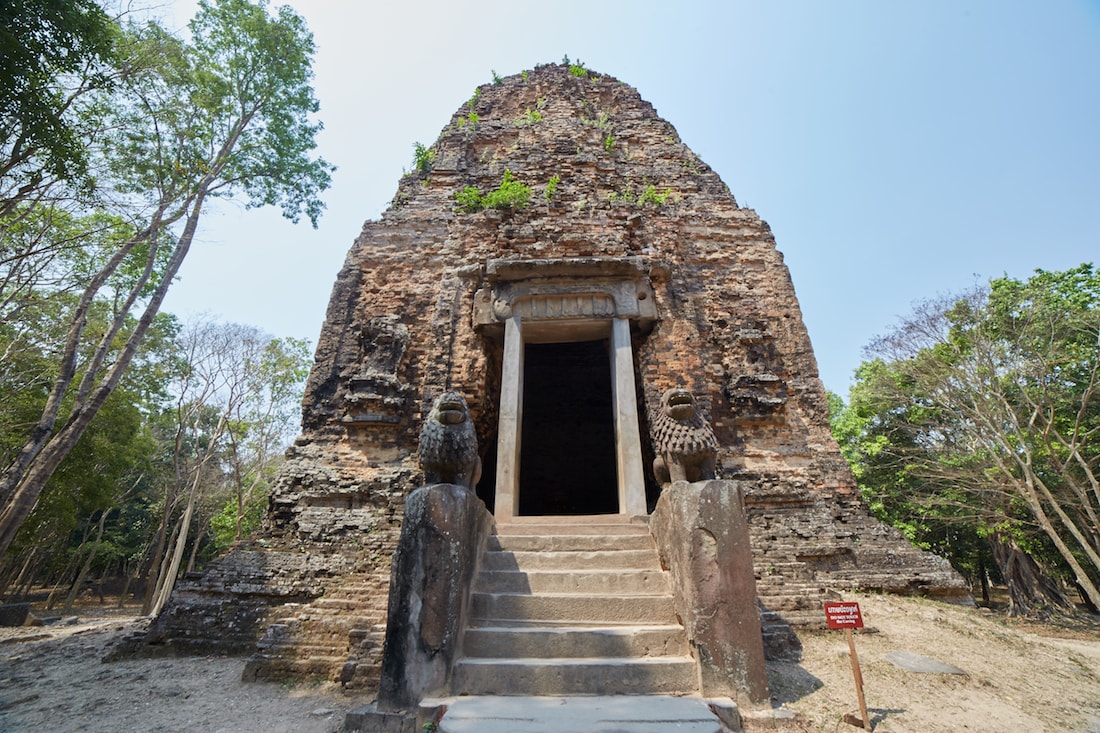
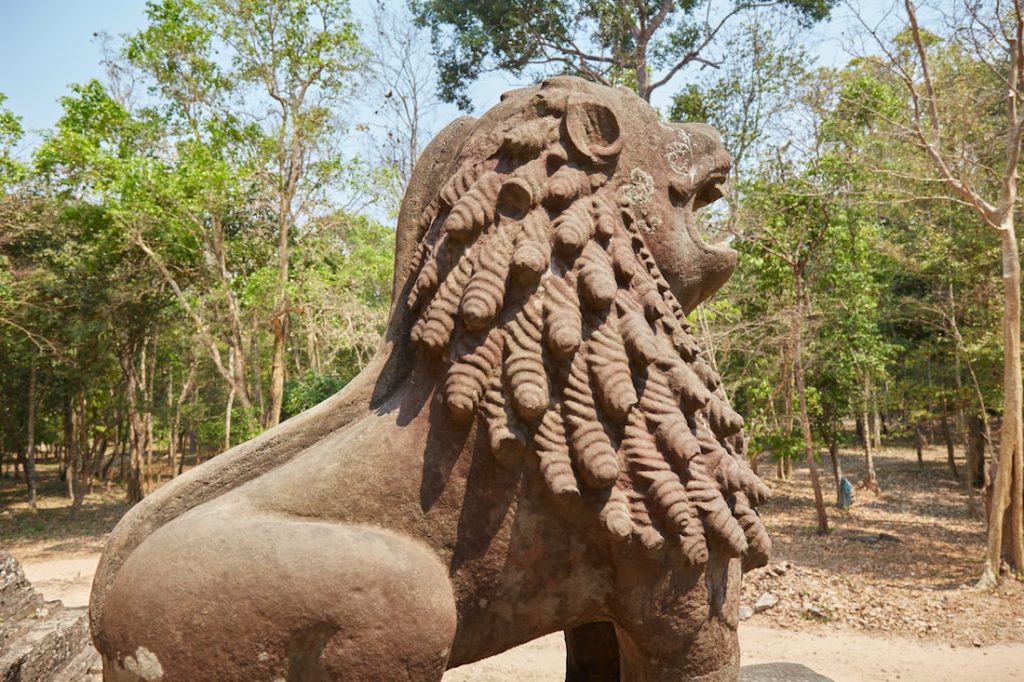



The real highlight of Prasat Tao are its lion statues. Interestingly, they’re both more detailed and more realistic than the lion statues you’ll find all over Angkor. Considering the prevalence of lion statues at just about every Angkorian temple, one wonders if the later artists found the Sambor Prei Kuk style simply too tedious to replicate.
Be sure to walk around the tower to see a well-preserved lintel carving, which again lack the deities or animals typically found at Angkor. Interestingly, the colonnettes on each side of the door are octagonal – a feature that would become almost universally used at later Angkor temples.
Southern Group
Entering the Southern group area, you’ll notice another structure that’s largely been overtaken by a tree. This was once a shrine dedicated to Shiva that featured a silver statue of Shiva’s animal vehicle, Nandi the bull.
Unfortunately, the structure and the shrine within it collapsed in 2006. You can, at least, get up close to see some of the remaining carvings of what was once the pedestal.
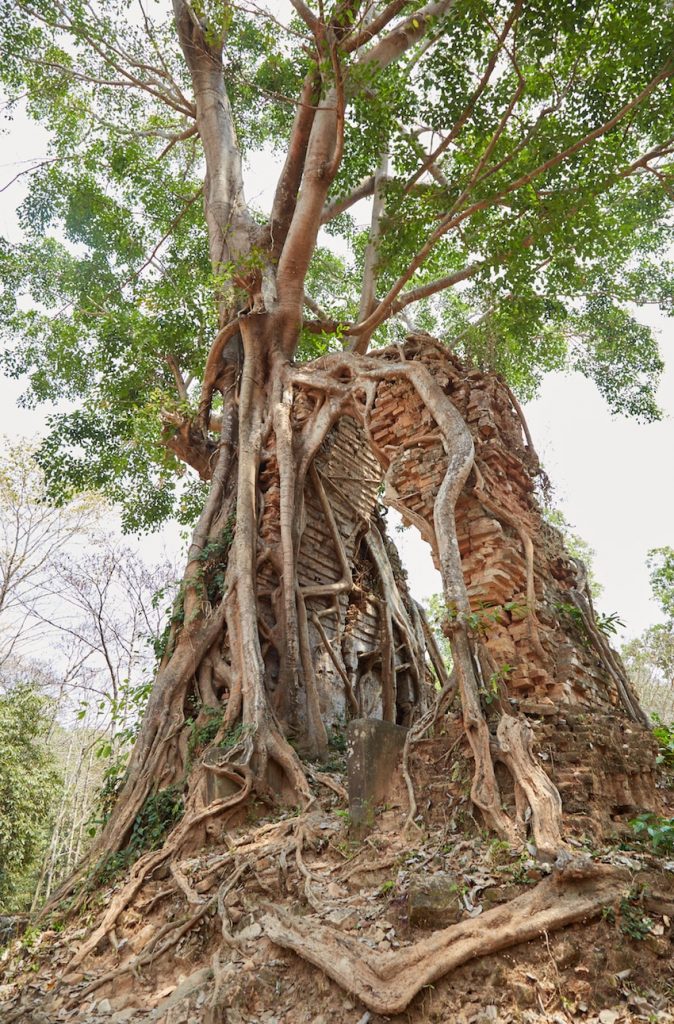
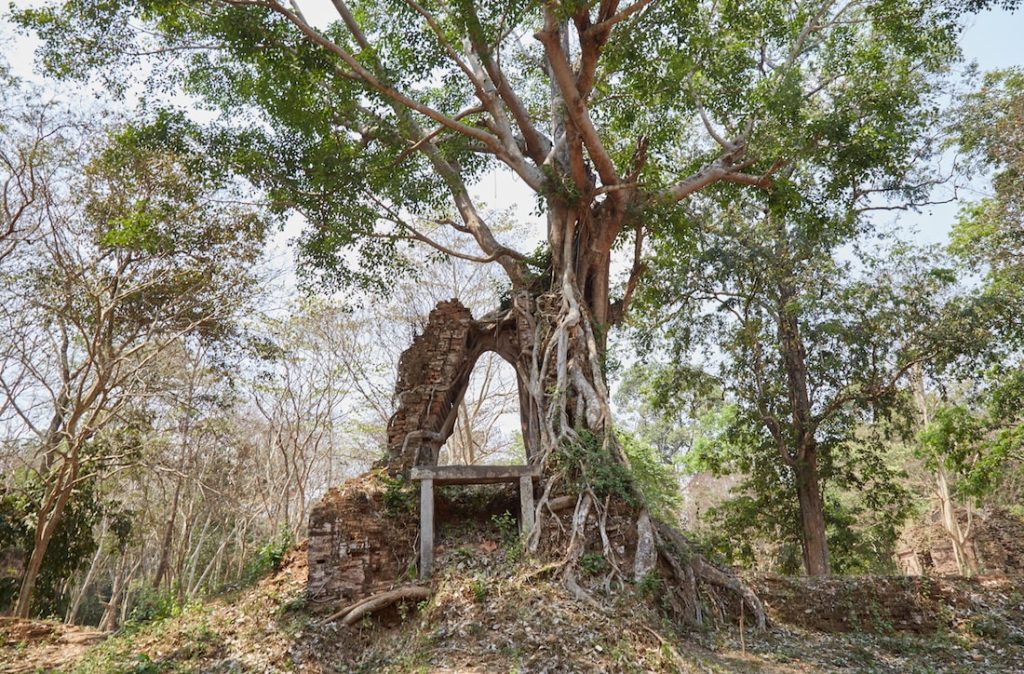
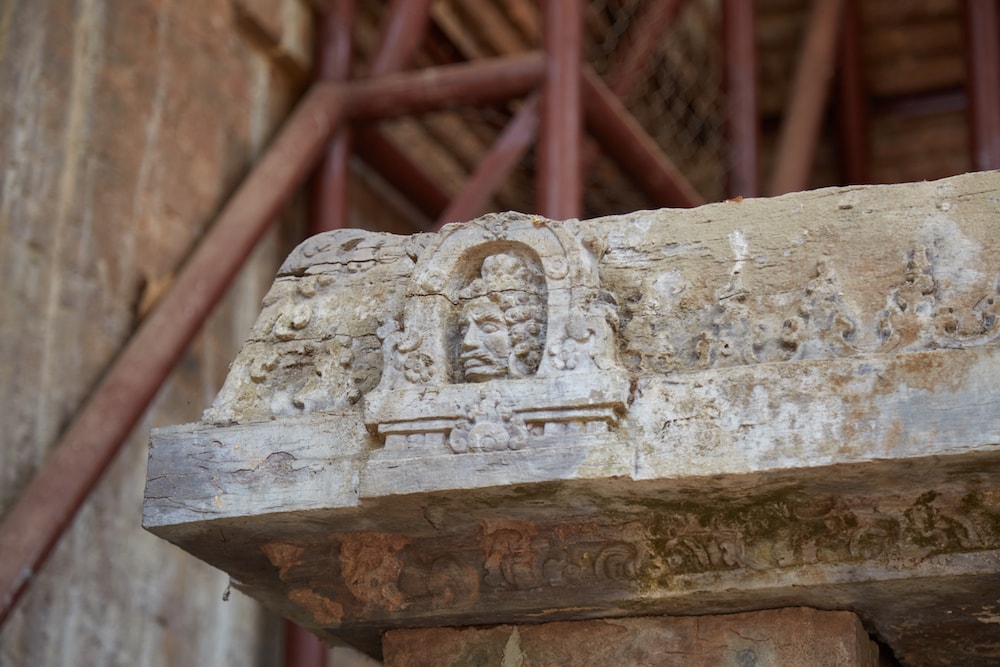
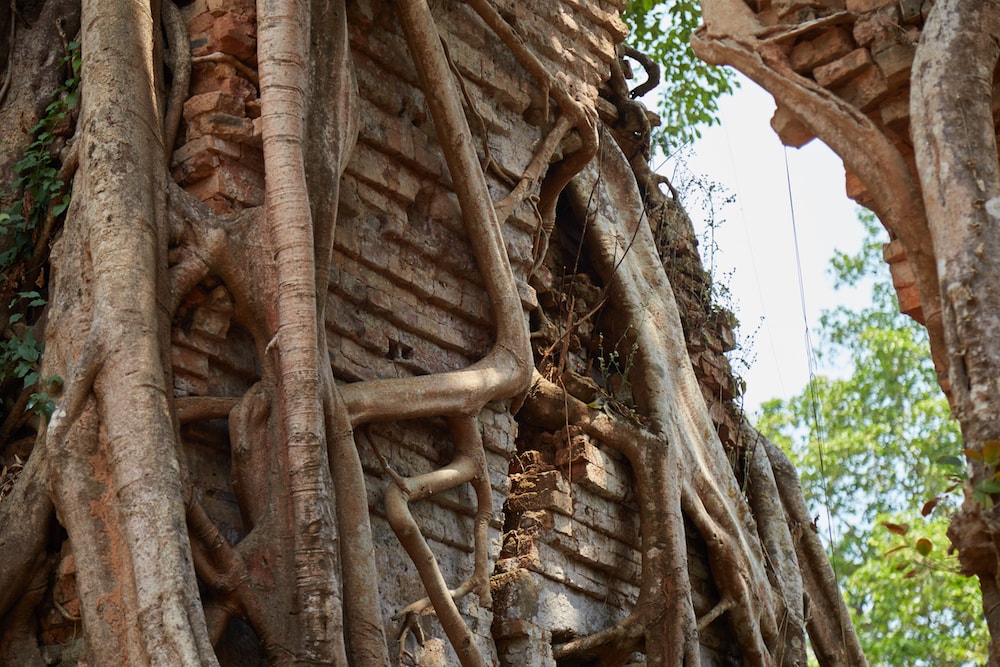
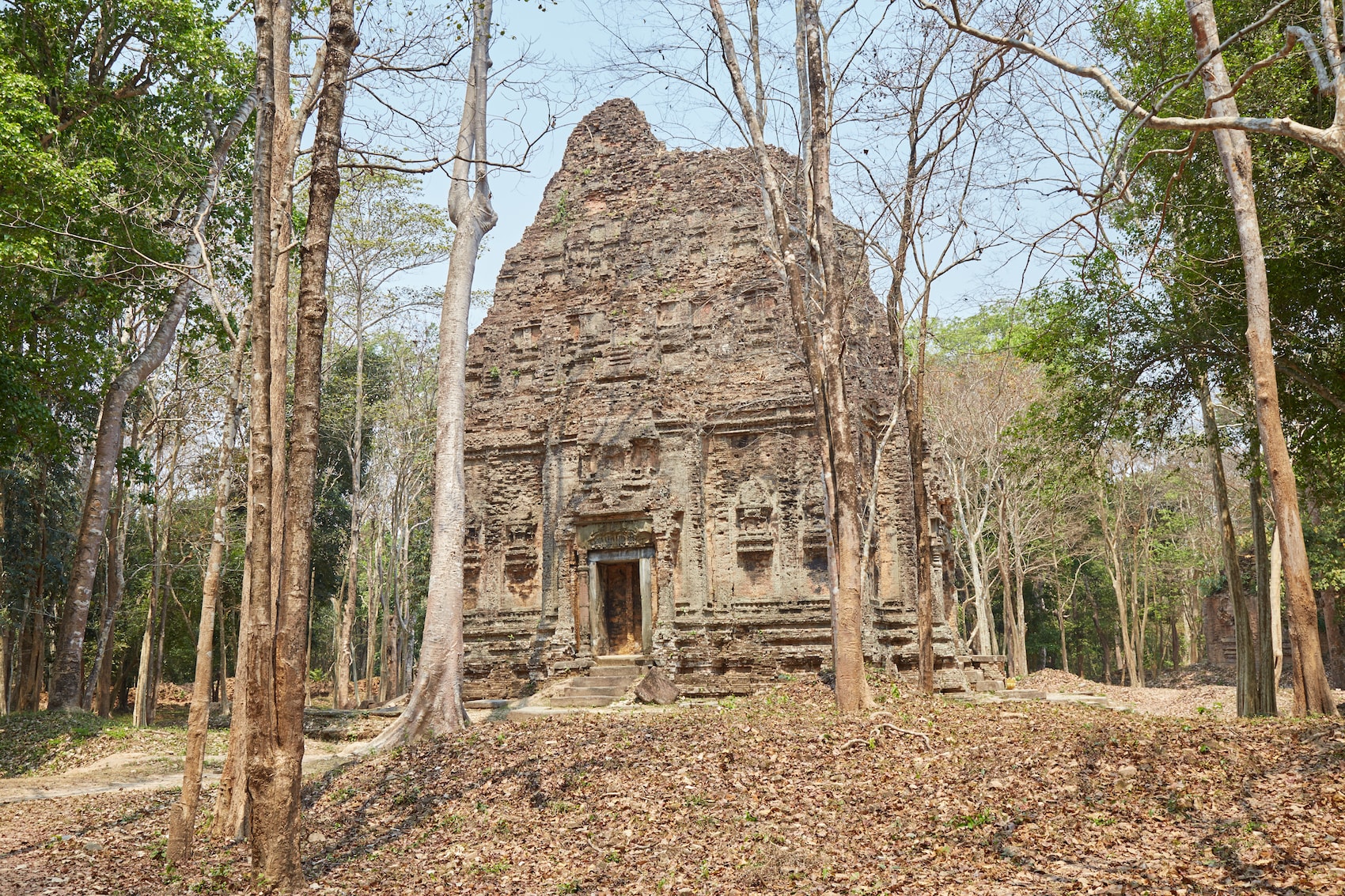
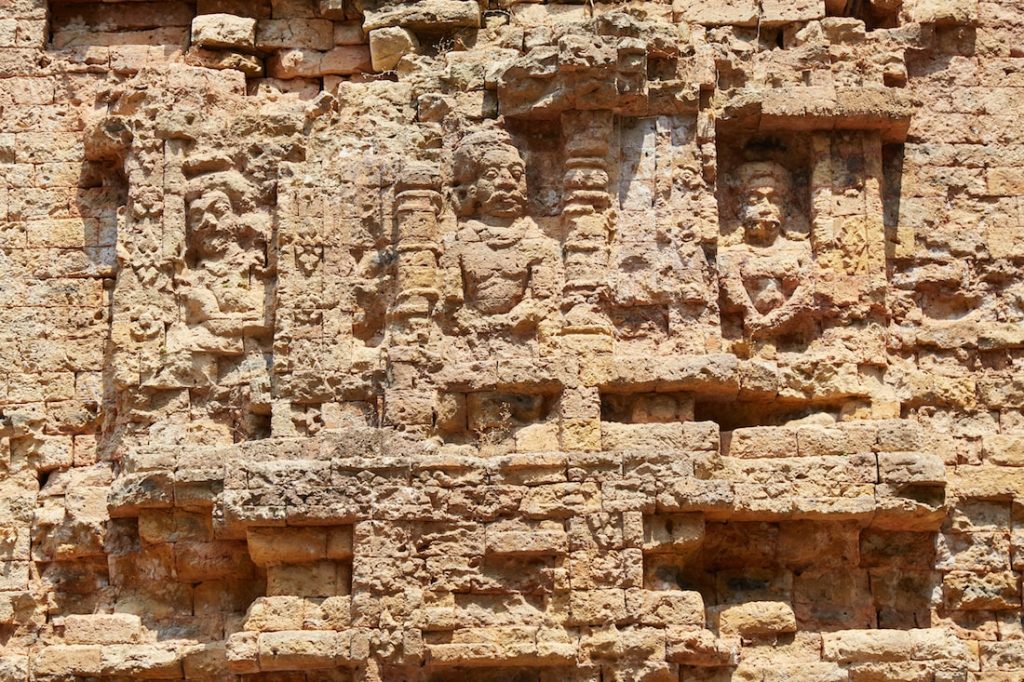
As with the northern group, this section of the ruins also features a large central sanctuary surrounded by several smaller ones. And like Prasat Tao, the central structure was built in a rectangular shape. It’s worth walking around to see the excellent carvings on the outer walls.
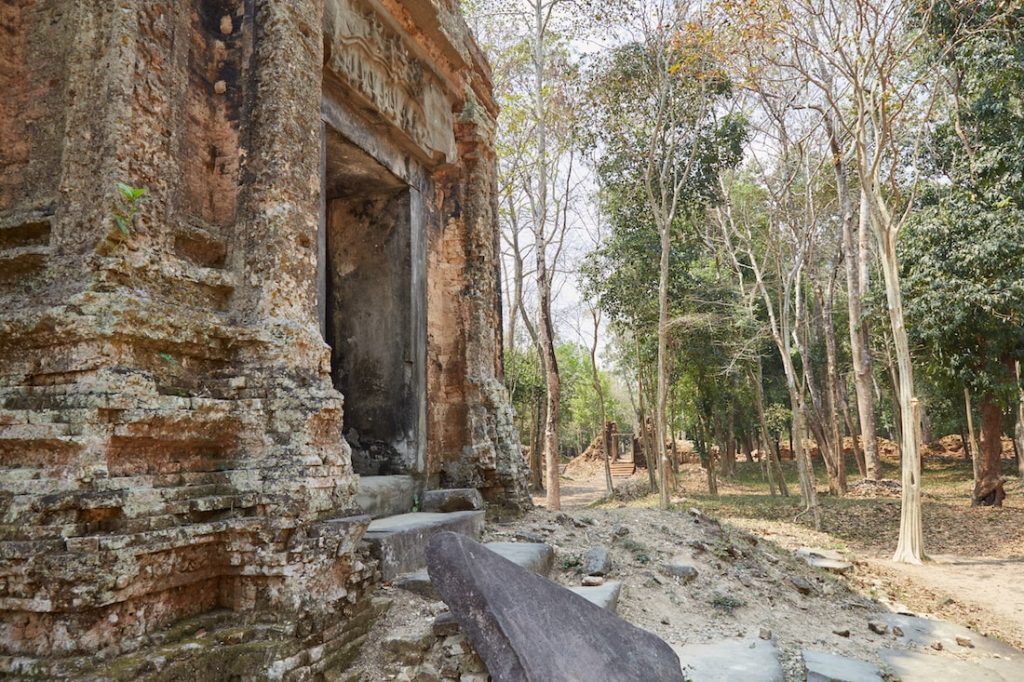


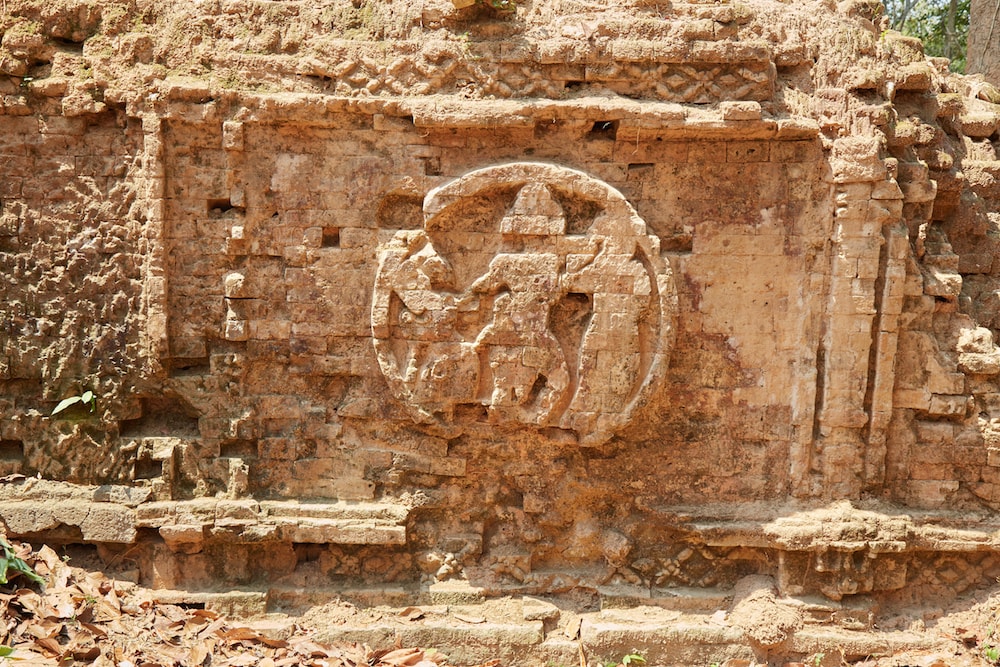

The western boundary wall is definitely worth a look, as a series of large medallions adorn the entire thing. This is yet another artistic feature unique to Sambor Prei Kuk. Walking around the complex, you’ll find even more octagonal structures, and things like round colonettes that would be sparsely used throughout the Angkor period.
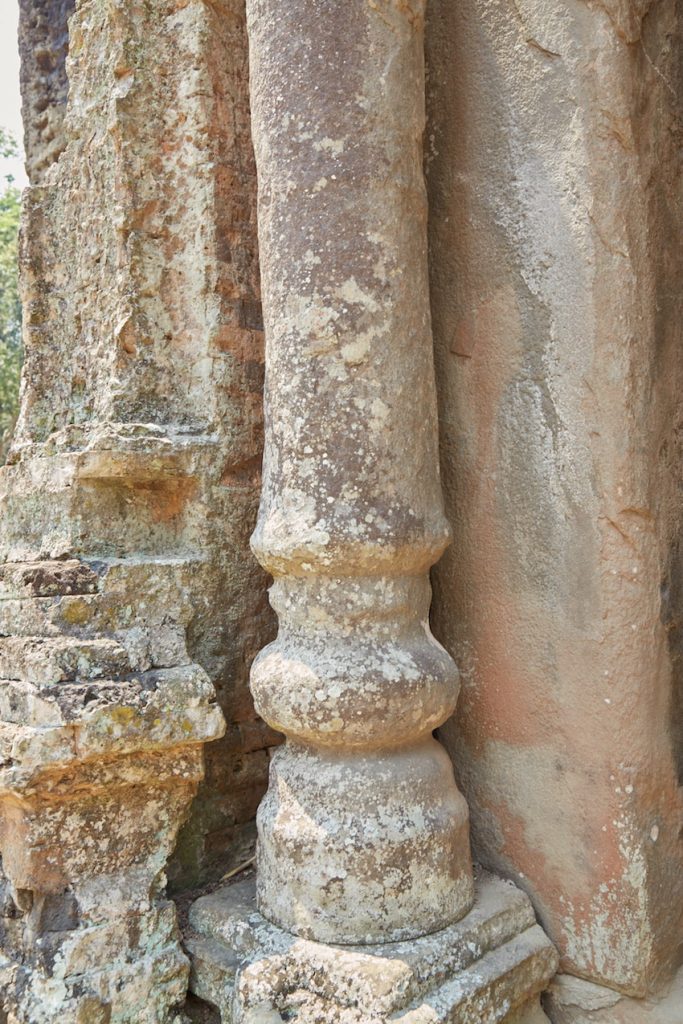



Aside from the ruins themselves, the peaceful forest surroundings are another main selling point of Sambor Prei Kuk. I did, however, encounter one tour group during my visit. And considering how crowded the Siem Reap area is getting, I wouldn’t be surprised if more tour groups started coming here as part of “alternative” ruins tour packages.
At least for the time being, Sambor Prei Kuk remains a pleasure to explore. The structures on their own may not be enough to impress those with only a marginal interest in archaeology or Khmer history. But Sambor Prei Kuk is a perfect option for those who loved the Angkor ruins and want to explore the country’s archaeological past a little further.
Additional Info
Sambor Prei Kuk costs $10 to enter. You can visit as a day trip from Siem Reap, but it’s around 2.5 hours each way.
You could potentially reach the city of Kampong Thom from Siem Reap or Phnom Penh by public transportation, and then negotiate a price with a taxi driver in town. Or, you could hire a private driver for the day.
Alternatively, if you have the time, I recommend hiring a private driver for three days to visit all the major outlying temples in one go (see below).
As amazing as the Angkor Archaeological Park is, Cambodia as a whole contains several other significant temple ruins that are absolutely worth the visit.
These include Sambor Prei Kuk, Preah Khan of Kampong Svay, Preah Vihear, Koh Ker, Beng Mealea and Banteay Chmar.
The problem is, though, that these temples are far from easy or cheap to get to. Furthermore, some of them are just a little too far for a single day trip from Siem Reap. And while you may be able to find a private bus or shared minivan from Siem Reap to the town closest to a particular temple, you’ll then have to negotiate with local taxi drivers each time.
To save yourself time, money and uncertainty, I’d highly recommend you hire a private driver from Siem Reap to take you on a 3 day, 2 night temple tour.
The itinerary goes something like this: Depart from Siem Reap in the morning and begin at Sambor Prei Kuk. If time allows, also stop at the nearby Phnom Santuk, which is not a Khmer ruin but still worth a visit.
Spend the night in the city of Kampong Thom. Depart early the next morning to visit Preah Khan of Kampong Svay (not to be confused with Angkor’s Preah Khan) and its outlying temples. Head north, and if time allows, visit Preah Vihear before it closes in the evening. Then spend the night in the town of Sra’aem.
Next morning, head to Koh Ker (or Preah Vihear first if you couldn’t make it the previous first day). Finally, on your way back, stop at Beng Mealea.
You should be able to arrange a driver, with the help of your hotel, for the above route for around $300 USD. It sounds expensive, and it is, but it’s actually cheaper and much more viable than visiting all these temples separately from Siem Reap. None of the temples listed above are directly accessible via public transport, and group tours from the city don’t go to there, except for maybe Beng Mealea.
A hotel in these towns should cost $10-15, while the temples themselves cost around $5-10 each.
Because of its location, you wouldn’t be able to include Banteay Chmar on this three-day trip. You’d have to make that a separate excursion, but luckily it’s fairly easy and cheap to reach with public and private transport.
You can check this web site for more in depth articles on each of the temples listed above.
I stayed at a hotel right in the center of the city called Arunras. It cost $15 per night and I was easily able to just walk in and book a room after my driver dropped me off. There are a couple of restaurants on the first floor that are open for breakfast and dinner, while there are also food vendors on the street outside.
Unfortunately, I had to switch rooms due to seeing some bed bug-like creatures! At least the staff accommodated me and I had no problems with the second room.
The location of Arunras can’t be beat, but you may want to do further research on accommodation, especially if you’re staying for more than one night.
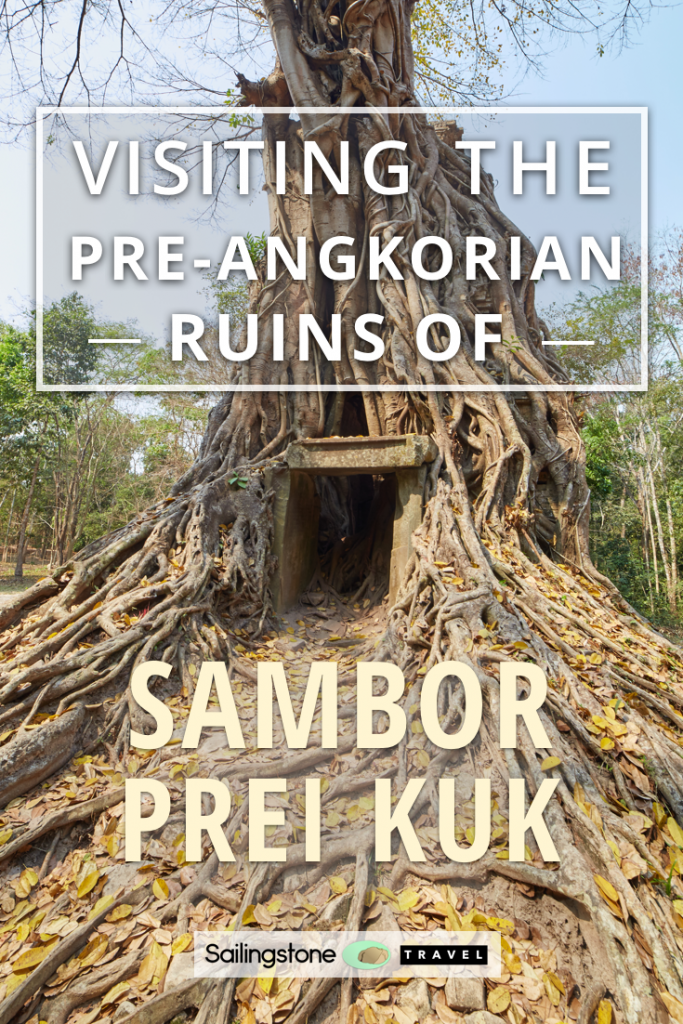
Pin It!

